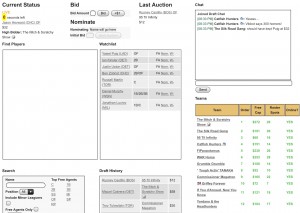Ottoneu 101: Is it too early to sell?
If you’ve ever played Ottoneu, you likely realized that it’s a different fantasy format. The 40-man rosters are deep, and the player universe is much larger than the standard fantasy offering. There are auctions for nearly all acquisitions, and during the season there is no FAAB (just the money you decide to budget for free agents.) However, perhaps the biggest difference between Ottoneu and other formats is the playoff structure. Ottoneu doesn’t have one.
Ottoneu is a season long race, starting the first day of the regular season and ending with the season’s final game. The objective is pretty simple. Score more points over your allotted game and innings caps than your opponents. If you aren’t playing in a money league, or your league has not designed some added incentives of their own, then there likely aren’t incentives to finish in second place relative to twelfth. Read the rest of this entry »

